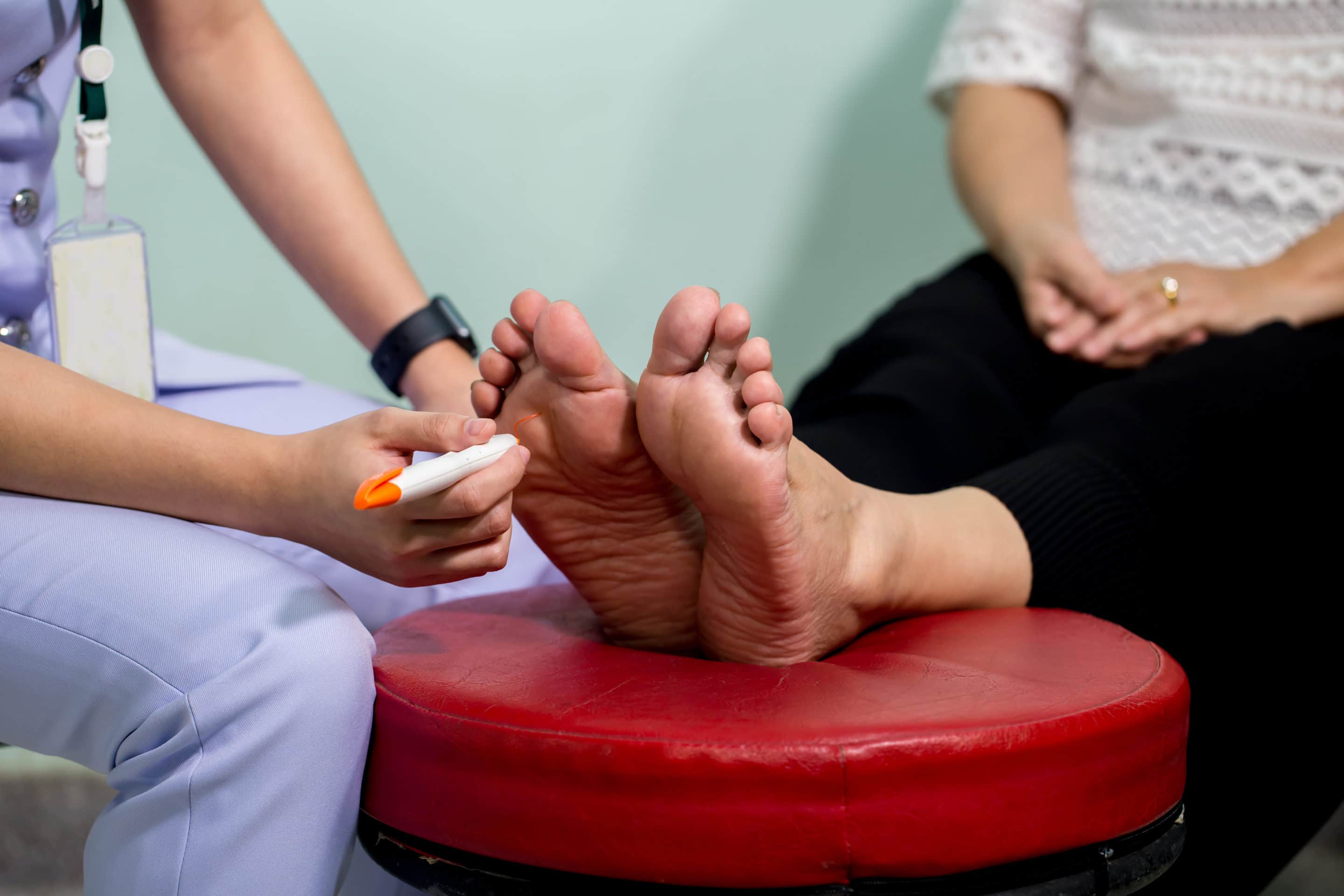Tips to Be Proactive About Your Diabetic Foot Care
You can generally boil diabetic foot care down to two approaches:
- Reactive – A problem has been identified and must be effectively treated or addressed.
- Proactive – Take actions to reduce the risk of problems and be watchful for any that may arise.
Both approaches are important, but the foundation of any good diabetic foot care plan lies in being proactive. If you are only sitting back and waiting for problems to appear – or even worse, waiting for them to get “bad enough” to act upon – you are giving yourself a lot more trouble than you could have, and frankly jeopardizing your future comfort and mobility.
When you start with preventative care and watchfulness, you can not only keep many problems from happening in the first place, but react to any problems that do develop before they have a chance to cause major harm. It’s a win-win approach, and all it mainly takes is a little effort and diligence.
And the best part is: you can start right now.
We Wrote the Guide on Diabetic Foot Care
How important is taking the right approach to diabetic foot care to us? We wrote an ebook that puts more details in the whys and hows, and we provide it for free to anyone who wants it!
It’s called Diabetic Foot Care: Fighting for the Future of Your Feet. If you want a copy of your own, simply click on the button below to be able to download a copy to your devices. You’ll find extra information and advice that we don’t get to in this blog, so it’s well worth having.
The Best Proactive Action You Can Take
If you could only do one thing to help protect your feet against the dangers and complications of diabetes, what should it be?
The good news is that you can do more than one thing, easily. But if you’re looking for one action that can arguably have the biggest impact on your future, it’s this: inspecting your feet daily for signs of trouble.
Early detection of any developing problems on your feet now is essential to preventing excess damage and lasting problems in the future. This serves especially true as the complications of diabetes can make it more difficult over time to detect injuries by feel alone.
Develop a daily habit where you take a few minutes each day to fully look and feel over your feet for any cuts, scrapes, discolorations, and anything else that simply shouldn’t be there. Even conditions such as corns, calluses, and chronic dryness should be noted, as they are areas of friction or weakness in your skin.
Find a convenient, consistent time to perform your exams. Moments around showering or bedtime are great options, as you tend to be barefoot then anyway. If you can’t get a full look at your feet on your own, a mirror can help you find the right vantage points – or enlist the aid of a loved one.
If you do detect something, contact us if it looks concerning or it doesn’t show signs of healing (e.g. scab, skin closing, fading) after a couple days. We will always be happy to address any concerns you have, and it helps us to have a history of what is happening to your feet when we look for potential issues and long-term needs.
Do not be self-conscious about daily foot inspections. You have no need to feel that way, even if your feet currently feel perfectly fine! Starting now is building a routine that benefit you greatly in the future – and you’ll be a pro at what you should and shouldn’t see on your feet should something start to develop.

Other Tips for Proactive Diabetic Foot Care
Being mindful of your feet and able to detect trouble early is key, but there is more you can do to help reduce your risk of injuries, sores, and other potential problems in the first place. Here are just a few suggestions:
- Opt for socks and shoes that are comfortable, supportive, and do not pinch or rub against areas of the foot. Specially made diabetic footwear and socks exist that eliminate seams and other potential “trouble spots” that tend to be overlooked.
- Do not walk barefoot outdoors. Whether you’re on pavement, dirt, or grass, there are plenty of dangers from hot surfaces and hidden objects to not make it worth it. We can help you find a good pair of sandals that can keep your feet better protected.
- Be mindful of circulation to your feet. The effects of diabetes can gradually restrict blood flow to your feet over time, damaging nerves and making it more difficult for injuries to heel. Help maintain good circulation by exercising regularly, not smoking, and avoiding constricting socks or stockings.
There are additional effective tips you can follow, many of which can be found in our ebook.
Your Professional Partner for Diabetic Foot Care
There is a great deal you can do on your own to maintain your foot health and reduce the risks of diabetic complications – but it’s helpful to have an expert on your side, too.
We can help you find and address rising problems that are easy to overlook, as well as provide expert aid and treatment whenever you may need it. A foot and ankle doctor who knows your history is a valuable asset to have!
Whether you need prompt treatment or want to discuss a plan for long-term care, we’ll always be happy to see you. Schedule an appointment with us by calling our offices or by filling out our online contact form.
